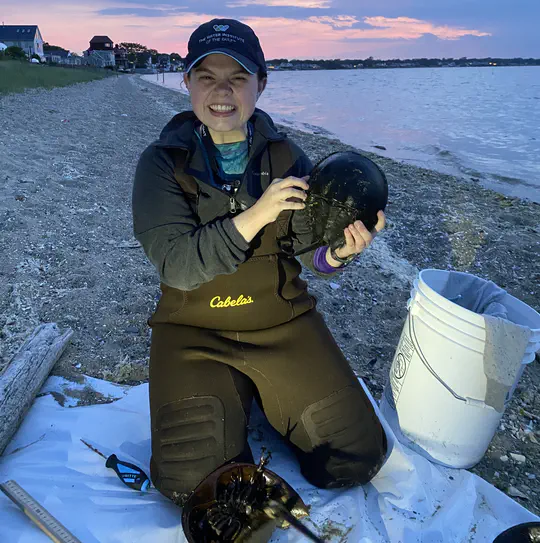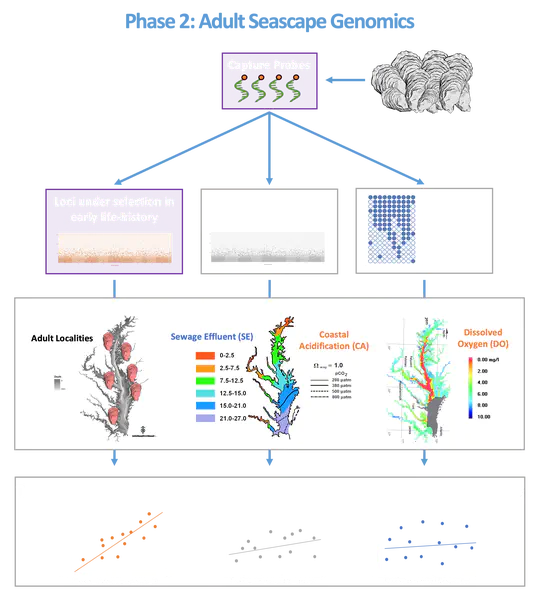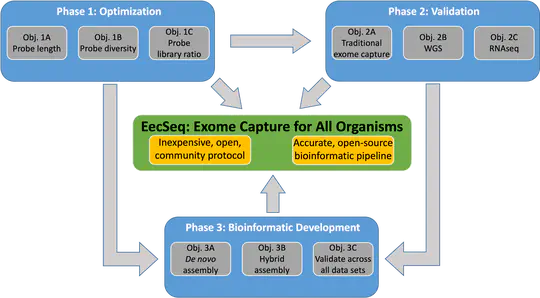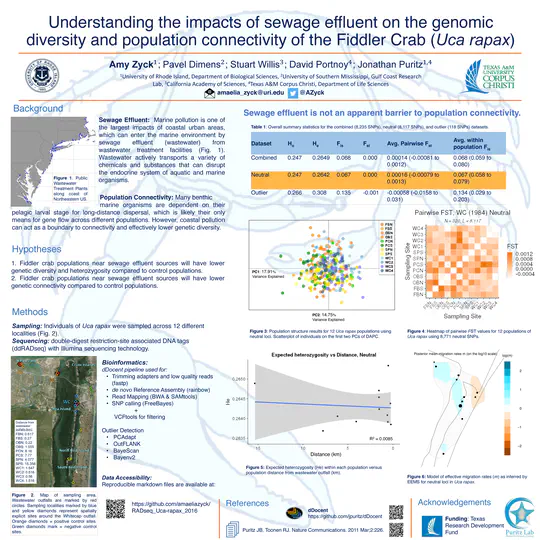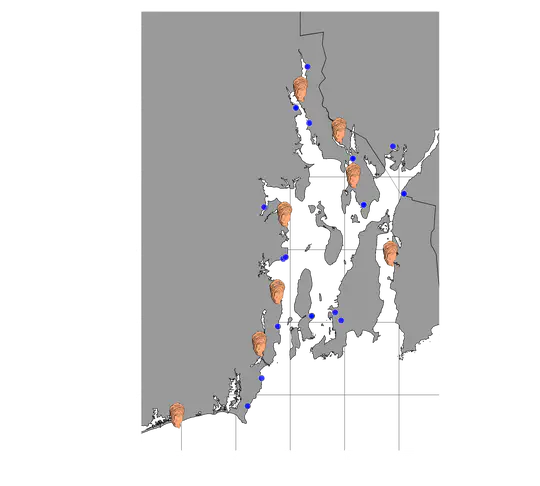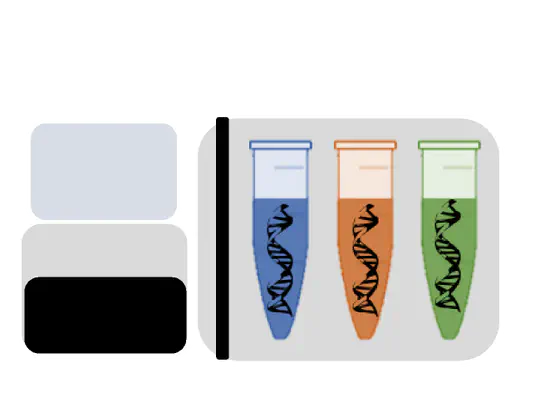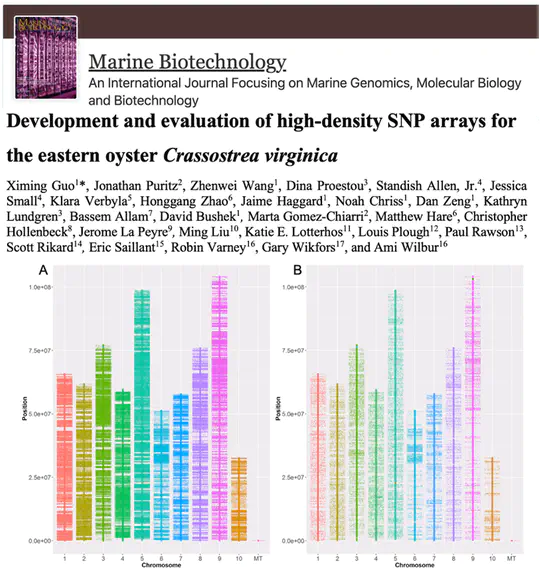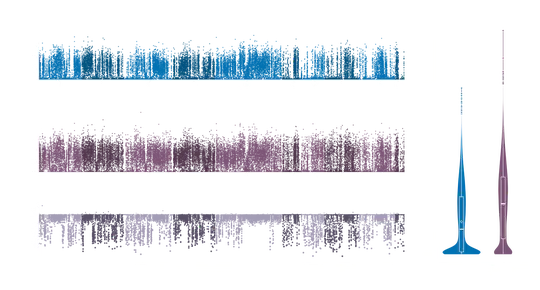Research Overview
Coastal ecosystems face a complex of stressors that span multiple temporal and spatial scales, from long-term global ocean change to localized episodes of coastal acidification, and marine species experience these multiple stressors simultaneously. Understanding how marine populations will evolve in response to environmental change requires investigating the synergistic impacts of multiple stressors across all life stages.
Our research is divided into two foundational pillars:

- Understanding how natural and anthropogenic processes affect the evolution of marine populations through the lens of larval dispersal.
- We combine laboratory multi-stressor larval exposure experiments with genomic surveys of natural populations, analyzing patterns of selection and migration in a geographic context using landscape (or seascape) genomic models.
- Developing genomic tools to ask evolutionary questions
- We develop both laboratory and bioinformatic methods to facilitate the use of next-generation sequencing in non-model species.
Next-generation sequencing

The advent of next-generation sequencing (NGS) has rapidly transcended population genetics to population genomics. Current research focuses on adopting next-generation sequencing technology and embracing an ever-adapting genomic toolkit to take advantage of this unprecedented amount of genetic data.
.js-id-EecSeq
Understanding the interaction between genotype, phenotype, and the environment is one of the greatest challenges in biology. Researchers face a two-fold challenge in experimental design: 1) sampling enough individuals to accurately characterize populations and 2) sequencing the most informative part of the genome, the base pairs that cause phenotypic change.
Bioinformatics

As genomic scale data sets become standard in molecular ecology, understanding how to efficiently and accurately process raw data is critical for accuracy in downstream population-level analysis.
.js-id-EecSeqBio
To develop EecSeq into an exome capture method for any organism, the accompanying bioinformatics pipeline needs to be capable of de novo assembly of exon loci directly from captured genomic reads.
Population Connectivity

Life history traits, such as location of fertilization and mode of larval development, have long been thought to influence the evolutionary process of marine organisms, from fine-scale genetic structure to the tempo and mode of speciation.
.js-id-FiddlerCrab
Coastal urban areas, home to over 50% of the population in the USA and over 60% of the population of the world, are a major source of marine pollution in coastal environments.
Selection

The environmental impacts of an ever-growing human population cross multiple spatial and temporal boundaries, and marine organisms experience all of these stressors simultaneously, increasing the need for research on synergistic effects.
.js-id-Coastal_Stressors
Marine species face a complex suite of stressors that span multiple temporal and spatial scales from long-term global ocean change to localized episodes of coastal acidification. The cumulative and concurrent impacts of multiple stressors remain relatively unknown and requires investigating their synergistic impacts across all life stages.
Seascape Genomics

We determine the role of natural and anthropogenic forces shaping the evolution of marine populations by testing (i) if selective regimes differ and interact across life-history stages and (ii) if the frequencies of both neutral and resistant genotypes correlate to environmental conditions and if adaptive loci partitioned across life stage.
.js-id-Coastal_Stressors_SG
Marine species face a complex suite of stressors that span multiple temporal and spatial scales from long-term global ocean change to localized episodes of coastal acidification. The cumulative and concurrent impacts of multiple stressors remain relatively unknown and requires investigating their synergistic impacts across all life stages.
